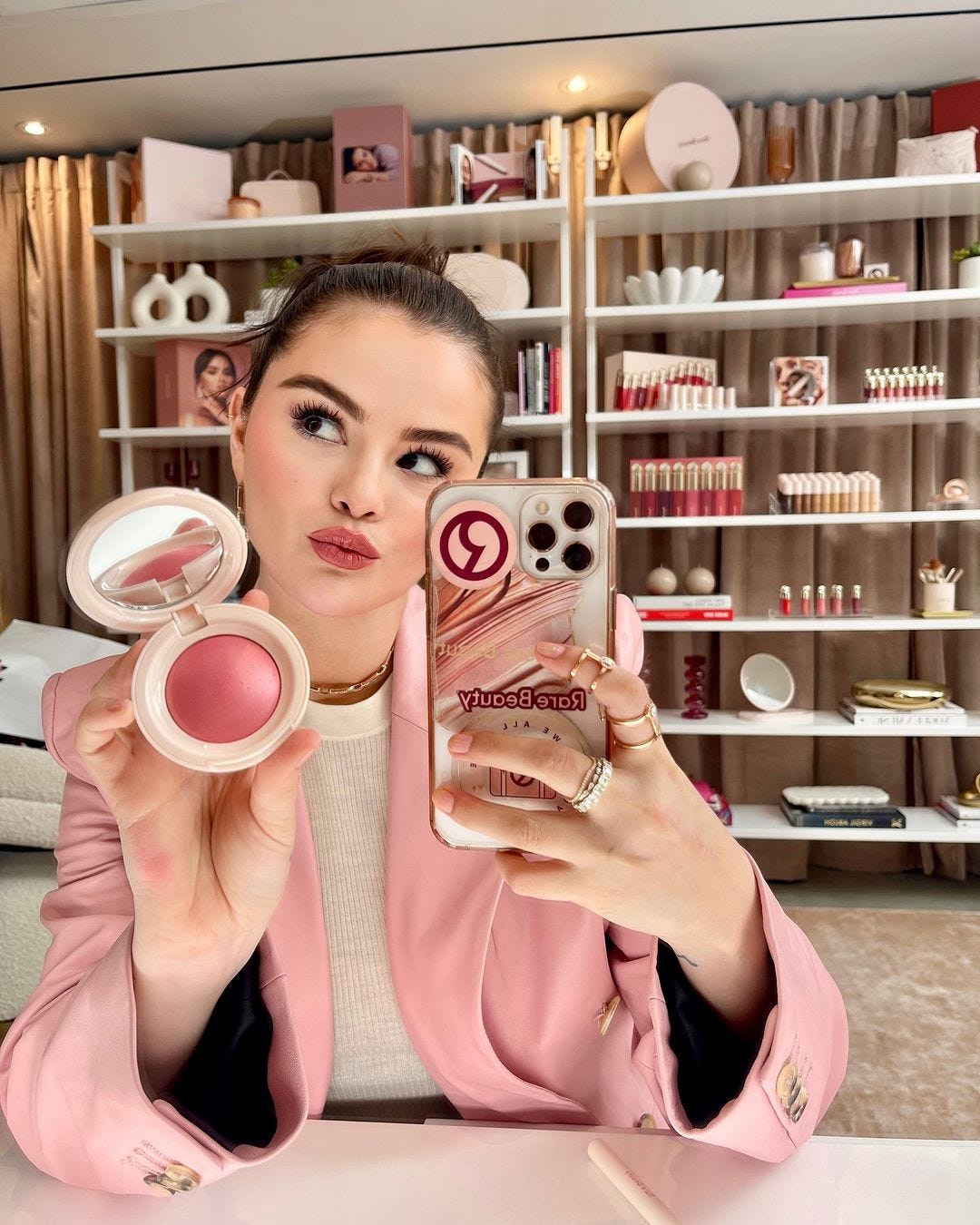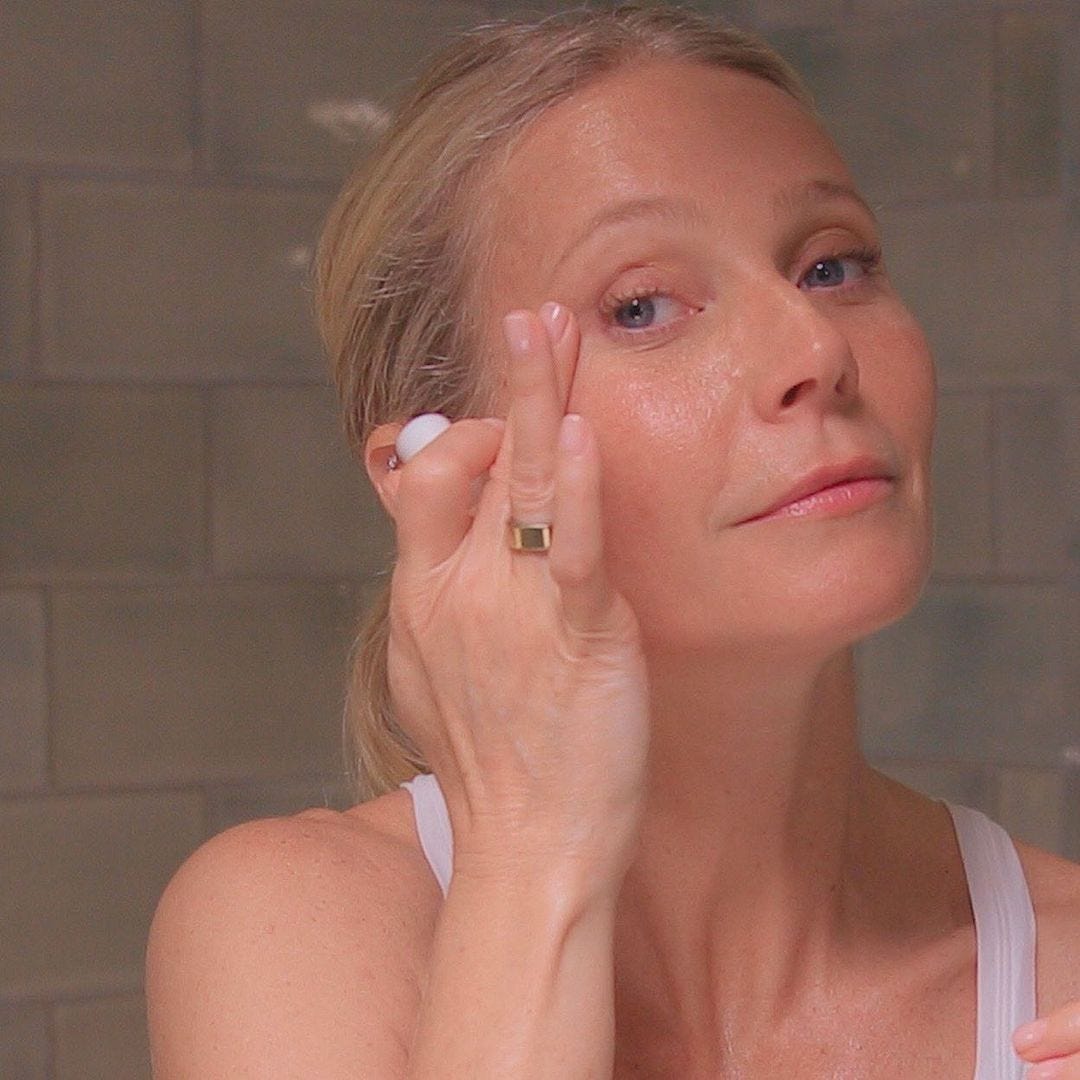What makes a celebrity beauty brand successful?
✨ Below, are the 6 strategies that lead to success. ✨
Welcome readers, old and new! Please hit the 💖 above and leave a comment if today’s newsletter speaks to you.
After recently unpacking Blake Lively’s hair care line, I started thinking about the new metrics of success for celebrity-owned beauty brands. After all, the game has significantly changed. Gone are the days when stars could dazzle consumers with interesting packaging and gimmicks. Remember when Madonna tried selling us a $600 face mask (and people bought it)???
Less than five years ago, whether you were an A-lister (or D-lister for that matter) or a rising TikTok star, the chances of making bank on a cosmetics line were high. That’s why we saw an uptick in brands during the height of COVID-19, like Gwen Stefani’s GXVE, Selena Gomez’s Rare Beauty, Jennifer Lopez’s JLO Beauty, and Addison Rae’s ITEM Beauty, among others.
However, in that short amount of time, consumers are far more picky about the brands they buy from. For one, they have razor-sharp knowledge of ingredients, decoding the most complicated chemical names with ease. Secondly, there needs to be a motivational factor to spend money, especially during a time when the economy is unstable, layoffs are happening every other week, and the market is so oversaturated with products that it becomes overwhelming.
Below, I break down the motivational factors that consumers are looking for and the celebrity-owned brands implementing these strategies.
Six Pillars of Success
1. Authenticity
No one has mastered the art of authenticity quite like Rihanna. We have inclusive shades in the complexion category due to her Fenty Beauty foundation launch in 2017, which she created based on her struggle to find the perfect match. It’s clear, this is the heart of her brand: addressing her own concerns and lifestyle needs. That’s why her products are packaged in travel-friendly and mom-on-the-go containers. She’s the epitome of authenticity, creating solutions based on her experiences while simultaneously filling a gap in the market.
2. Community
Building community is essential in the beauty industry. With social platforms like TikTok and Instagram, as well as online forums, this communication encourages the consumer to join in. A lot of times, other hobbies can either feel intimidating or isolating, like exercising, reading, sewing, etc. Beauty, on the other hand, invites collaboration and connection. Talking about your botched procedure can encourage others to come forward and share their experience. You can easily get guidance and advice on how to use a tool or how to create a specific look. These things create community, and brands that capitalize off this arena set themselves up for success. Take Rare Beauty, for instance, which opens up the dialogue about mental health in the beauty space. This not only invites Selena Gomez’s fans to participate in the conversation, but encourages them to prioritize beauty from the inside out. Each launch reflects its message, with products named with positive affirmations and designed to provide relief. (Personally, I love that its hand cream also works as a hand massager to target pressure points.) Community is how consumers feel less alone in a world that constantly tells them they aren’t good enough, so they need to mask their flaws with products and procedures. Rare Beauty has carved out a special space, creating a community without making people feel bad with its offerings.
3. Innovation
While it’s harder to reinvent the wheel these days, innovation is key. For brands to stand out in each category, they need to have an edge. Does its formula feature an uncommon hero ingredient? Is the formula contained in an unusual package? Is the brand utilizing technology to create an immersive experience? I’ll admit, not a lot of celebrity-owned brands come to mind in this arena. However, Haus Labs excels in formulation. Many (if not all) of its products are budge-proof, which isn’t an exaggeration either. From the concealer to the eyeliners, they can outlast any of my Disney days and cardio sessions. Its superhero ingredient, fermented arnica, is also a powerhouse at reducing redness and irritation. Some of its products are also made in Korea, and we all know South Korea is astronomically more advanced in cosmetics.
My theory is that Blake’s brand is leaning on the “innovative” strategy by marketing its masking method (swapping out conditioner for a hair mask) as a fresh take on hair-washing. But the approach isn’t exactly a better or easier solution for consumers, which is where the innovation falls short. After all, frequent hair masking can lead to more problems in the long run, like causing excess oil, build-up, and heavy, weighed-down strands. It’s also harder to change people’s habits versus asking them to add an extra product. (It’s easier to tell someone who washes their hair every day to treat their dry scalp with a hair oil than ask them to stop washing their hair every day.)
4. Purpose
Purpose is one of the best selling points a brand can offer consumers. Ultimately, it’s the reason why the brand exists in the first place. And the intention behind it usually draws consumers in, giving them a front-row seat to its mission. Goop is one of the few celebrity lines to spearhead this space. Gimmicks and woo-woo bullshit aside, Gwyneth Paltrow ushered in the clean beauty movement, while harmoniously blending beauty with wellness. Despite some of her unsubstantiated claims about synthetics, her purpose with Goop extends beyond beauty, arming consumers with the knowledge to change their lifestyle habits for the better: eating less processed foods, cleansing the mind with holistic rituals, getting a good night’s sleep, etc.
5. Value
With purpose comes value. And in today’s market, the consumer wants to know how a product will add value to their life. To me, Rhode serves its customers with a highly curated set of products that pack a punch. Having a streamlined collection is valuable to Hailey Bieber’s fans because it shows that you can get maximum results with little effort. This system also goes against the grain since many brands often sell the “more is more” approach.
6. Storytelling
Lastly, storytelling is what tugs at the heart of consumers, giving them a sentimental attachment to the product that ensures brand loyalty. No one has done a better job than Beyoncé, whose Cécred hair care line is quite literally an ode to her roots. Not only has queen Bey talked about her mother Tina Knowles’ talents as a hairdresser and salon owner, but she’s also shared her own hair journey over the years. This origin story provides context to Beyoncé's foray into beauty, as well as creates trust between her and the consumer. We can see she’s put the time, effort, and care into her brand because it’s embedded in her identity. But we wouldn’t have known that had she not emphasized the narrative.






